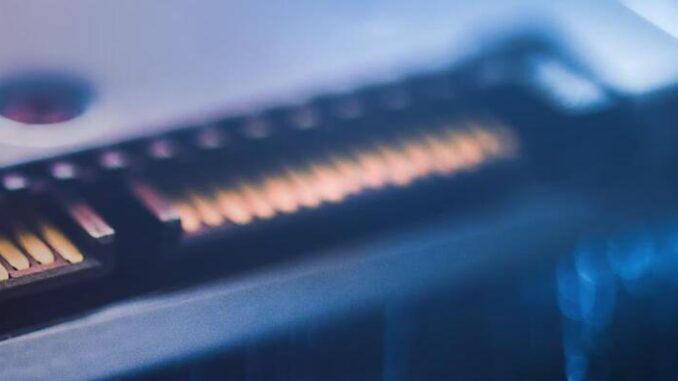
When buying a desktop PC or laptop, the question usually arises: Does the device have an SSD? The electronic storage medium has revolutionized computer technology and supplements or replaces mechanical storage drives with increasing frequency.
- The SSD is an electronic storage medium that does not have any moving parts.
- The so-called semiconductor drive offers various advantages compared to magnetic or optical hard drives (HDD), but is more expensive.
What is an SSD?
Based on abbreviationfinder, the abbreviation SSD stands for “Solid State Drive”. The name already reveals what makes this storage drive unique: It does not contain any rotating components. The SSD technology has been known since the 1950s, but due to its high price it was initially unable to prevail against cheaper alternatives such as drum storage.
It was not until the turn of the millennium that the technical development of the SSD gradually increased its economic profitability. Since around 2007, notebook models have been on the market that use either pure SSD or hybrid solutions as storage media – the latter combine the solid-state drive with a magnetic or optical hard drive. Other common areas of application of the SSD are, for example, USB sticks , MP3 players and other mobile devices, and more and more stationary devices such as desktop PCs.
How does an SSD store data?
An SSD storage medium is non-volatile and secures data electronically through integrated circuits. An SSD is usually composed of several permanently installed semiconductor components that are compressed to form a hard disk. It can be broken down into several components, each with a different function.
- The memory unit: SDRAMs or flash-based cells can be used as memory chips. The cells on the circuit board are either charged or uncharged, so that data storage is induced via electronic charge and discharge. A write process is necessary both when saving and when deleting data – this is recorded and counted by a counter. This is important because each cell is only designed for a limited number of memory cycles.
- Since the SSD as a flash memory arranges data chaotically, it requires a so-called controller. He takes on the management of the data and knows where which data is stored so that it can be accessed as quickly as possible.
- The interface is the connection between the SSD and the other components of the PC – such as the graphics card or the processor. S-ATA or PCIe interfaces, for example, are common.
HDD or SSD – which is better?
A hard disk drive (HDD) based drive contains rotating magnetic disks and stores data on it using mechanical read / write heads. A HDD is still built into many older PCs and laptops – but is this technology outdated? An SSD actually has many advantages over an HDD:
- An SSD manages entirely without moving components and is therefore more robust and drop-resistant than an HDD, which makes it particularly suitable for mobile devices such as notebooks.
- The lower weight of the SSD compared to the HDD is just as practical for mobile devices.
- In contrast to the HDD, in which the rotation of the magnetic disks can be heard, an SSD works completely silently.
- Flash memories are more energy-efficient – therefore devices with a built-in SSD usually score with lower power consumption and longer battery life.
- An SSD hard drive can access data four to five times faster than an HDD drive. This is also noticeable in practice – for example when starting up the PC.
Nevertheless, the HDD also has some features that speak for it in a direct comparison:
- Even if SSDs are now affordable, HDDs are still cheaper.
- SSDs can only be rewritten to a limited extent. However, this problem is hardly significant in practice, after all, an SSD contains thousands of individual memory cells, depending on its capacity. If you want to be on the safe side with the service life of the storage medium, you should instead use an HDD that can – in theory – overwrite data an unlimited number of times.
- With very large amounts of data, an HDD drive has advantages over the SSD: Magnetic hard drives offer significantly more storage space than electronic ones.
- If system errors occur with an SSD, the data is usually irretrievably lost. With HDDs, in the event of damage, thanks to special tools, there is usually the option of saving all or part of the data.
If you don’t want to choose one of the two storage solutions, you can rely on a so-called hybrid hard drive (also SSHD), as it is built into many devices today. It combines the advantages of both types of storage, as a larger HDD hard drive is combined with a mostly smaller SSD. Every hard drive can show its strengths: the SSD as a boot drive – i.e. for starting the PC and loading the operating system – and the HDD for storing large amounts of data such as pictures or videos.
